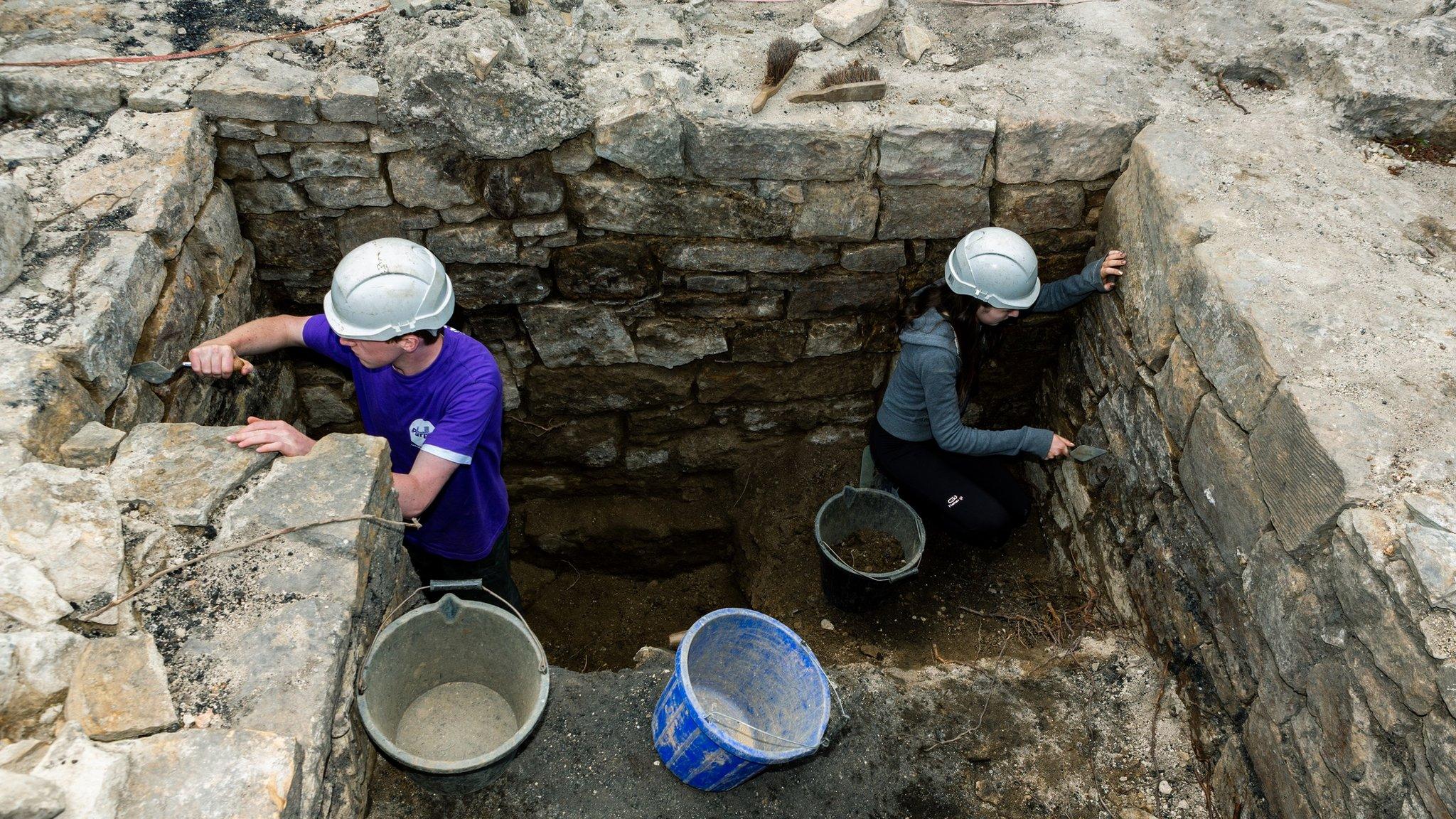Auckland Castle dig unearths tower remains
- Published

Durham University archaeologists have held several digs in the grounds of Auckland Castle
Archaeologists say they have made a number of interesting medieval finds in a dig at a castle, including the remains of a once-tall tower.
Experts from Durham University have been excavating areas around Auckland Castle in Bishop Auckland.
The former deer park-turned-palace has been the main home of the Bishops of Durham since the 1830s.
It is under-going a major restoration after being bought by philanthropist Jonathan Ruffer in 2012.

Artist Andy Gammon has created a picture of how Auckland Castle may have looked, including with its tower
Recent discoveries include steps and the cellar of a large three or four-storey tower dating from the mid-1300s and the supports for a bridge and entranceway from the 1100s.
Professor Chris Gerrard from Durham University's Department of Archaeology said their research showed the long-extinct tower had suffered a "series of structural failures" due to collapse or subsidence.
He said: "The fascinating thing about Auckland Castle is that, until recent excavations, we didn't know much about its medieval layout.
"Through this excavation we have gained a huge amount of knowledge about the layout and extent of the medieval complex."
A university spokeswoman said the tower would have "dominated the surrounding countryside" and "could be seen for many a mile".
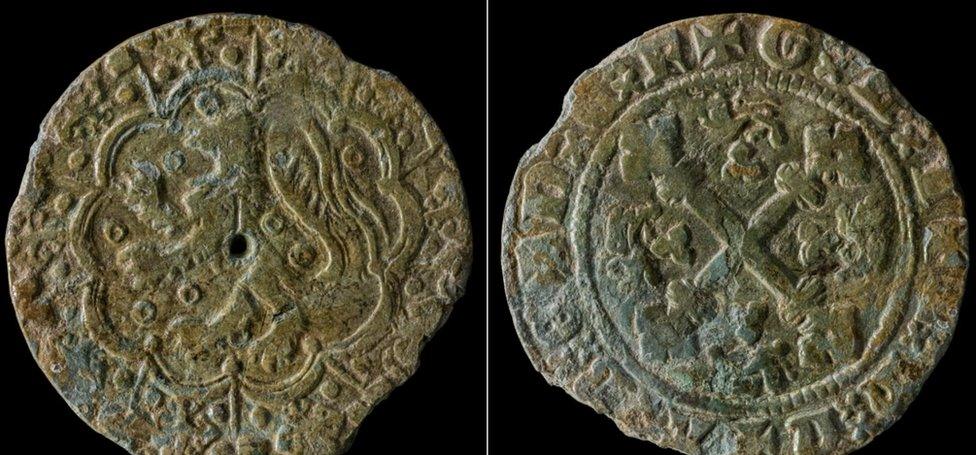
A jetton, which would have been used as a token on a counting board similar to an abacus, was also found
"It would have given the household a grandstand view of the landscape out across bishop's park with its animals, fishponds, woodland and rivers," she said.
Other discoveries included a jetton, or "reckoning counter", dating from 1350-80 which would have been used on a large board to help with addition or subtraction like an abacus.
The team also found a silver penny dating from the reign of Henry VI, which was minted by the Bishops of Durham between 1427-30.
At the time, it would have been worth a gallon of ale or a couple of dozen eggs.
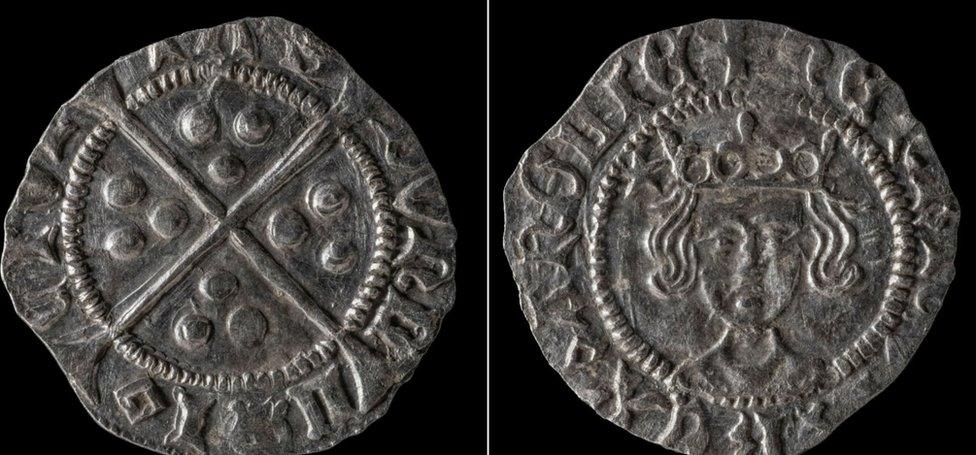
This coin would have been worth a gallon of ale or a couple of dozen eggs.
Dr Caroline Smith, an archaeologist working for the Auckland Project, added: "This small coin tells a big story about how important and influential the Bishops of Durham were during the medieval period.
"Most bishops did not have the same powers or freedoms as the Bishops of Durham, who could mint coins, levy armies and hold law courts alongside their religious role."

Follow BBC North East & Cumbria on Twitter, external, Facebook, external and Instagram, external. Send your story ideas to northeastandcumbria@bbc.co.uk, external.
Related topics
- Published30 November 2020
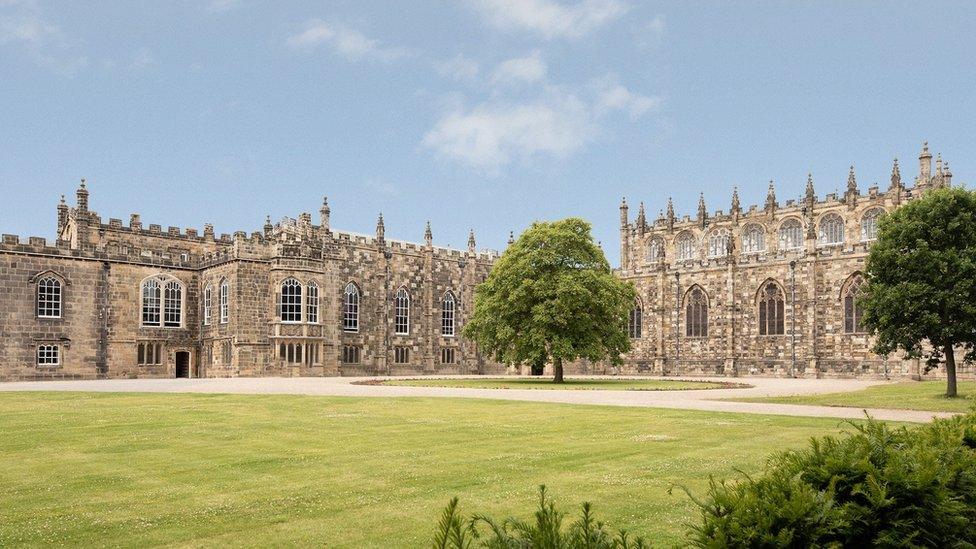
- Published8 February 2021
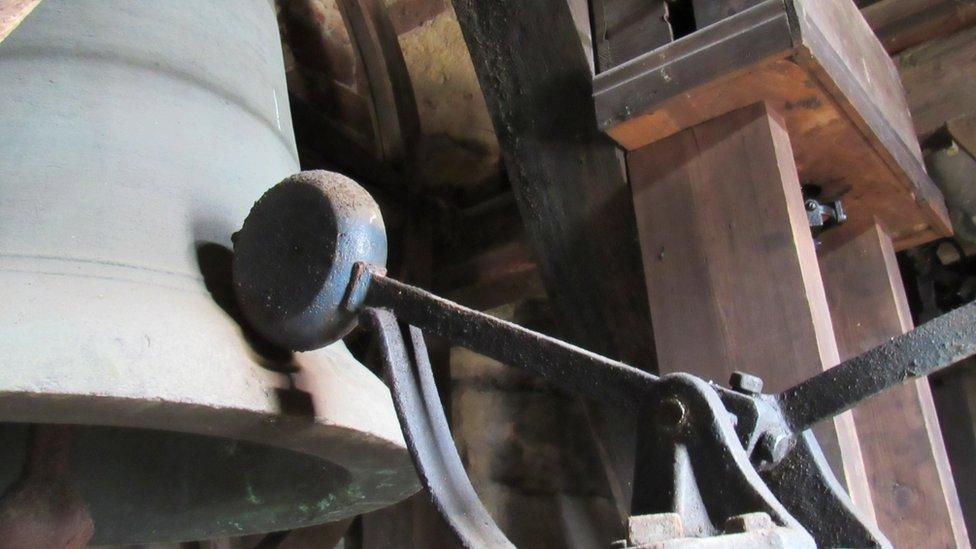
- Published8 July 2018
